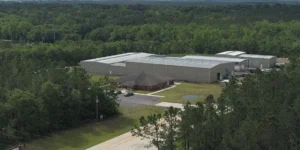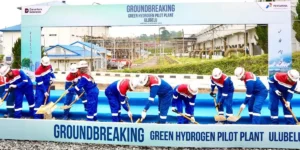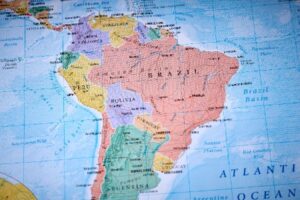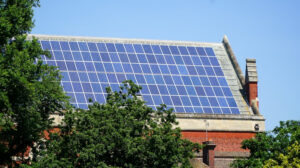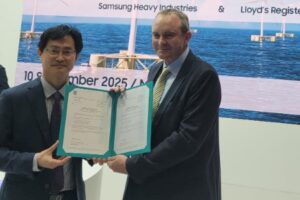Japan’s largest steelmaker to invest billions of yen into hydrogen-based direct iron reduction

Nippon Steel, the largest steelmaker in Japan, is set to invest ¥38.4bn ($250m) into the development of highly efficient hydrogen-based direct iron reduction and electric arc furnaces to drastically cut emissions from steel production.
In traditional blast furnace-based steelmaking, coking coal is fired to “reduce” iron ore, or remove its oxygen content, while simultaneously producing high heat to melt the metal.
However, this is an emissions-intensive process, with Japanese government figures putting its domestic steel industry’s CO2 footprint at 131 million tonnes a year, or 40% of the country’s industrial emissions.
The move by Nippon Steel may be a reaction to plans by the EU — a major steel importer — to start taxing imports according to their lifecycle greenhouse gas emissions from 2026 as part of the bloc’s Carbon Border Adjustment Mechanism, which is expected to drive steelmakers outside its borders towards greener alternatives to blast furnaces.
Nippon Steel’s research and development programme, which is scheduled to run from this year through 2028, aims to develop extremely efficient technology that uses H2 to directly reduce low-grade iron ore and produce 100 or more tonnes of iron per hour, which can then be melted into steel in electric furnaces.
The focus on low-grade iron ore could also widen the potential supply for green steelmaking. For example, H2 Green Steel’s planned facility in Sweden has to use high-grade, pelletised iron ore, which it is set to ship from Brazil and Canada as it has been unable to sign domestic supply agreements.
Article continues below the advert
Nippon Steel also aims to reduce impurities in hydrogen-processed iron, such as keeping phosphorus concentrations to 0.015% or less, in order to make high-grade steel, while also producing slag from the electric arc furnaces at a quality suitable for use in cement—eg, 3% or lower iron oxide concentration.
A demonstration is scheduled to be held at a test electric arc furnace a fifth the scale of a conventional blast furnace in 2030.
The Japanese government’s New Energy and Industrial Technology Development Organization (NEDO) will contribute ¥23bn, footing around 60% of Nippon Steel’s bill.
But while similar government-backed projects in Europe to use hydrogen for direct iron reduction have committed to use green hydrogen — produced from renewables-powered electrolysis — in order to reduce emissions by up to 95%, Nippon Steel’s pilot makes no such commitment.
The project is set to use H2 generated within Nippon Steel’s existing works from coke oven gas, with any extra volumes purchased from external sources — likely to be grey hydrogen produced from steam methane reforming.
NEDO suggests that the technology developed will reduce CO2 emissions by “more than 50%” by 2030.
Nippon Steel is also running a NEDO-backed trial to inject heated hydrogen into existing blast furnaces, which in February it claimed had enabled a 33% cut in emissions at a test furnace.

